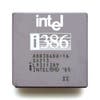[Solved] UUID for root reverted to previous UUID
I suddenly got the same problem in /efi/loader/entries all conf files reverted to previous uuid (first post ). To change uuid I just edited all conf files with the correct uuid for root.
I don’t know if manually changing was correct or if I should use some sort command.
UUID in status is wrong.
I have no idea what is reverting UUID back to the wrong one after updating system.
I could just reinstall but if possible I would like to try to fix this and learn.
Edit: Problem was that in /etc/kernel/cmdline had wrong UUID. Changed it to correct one and dracut-rebuild uses correct UUID.

Add comment